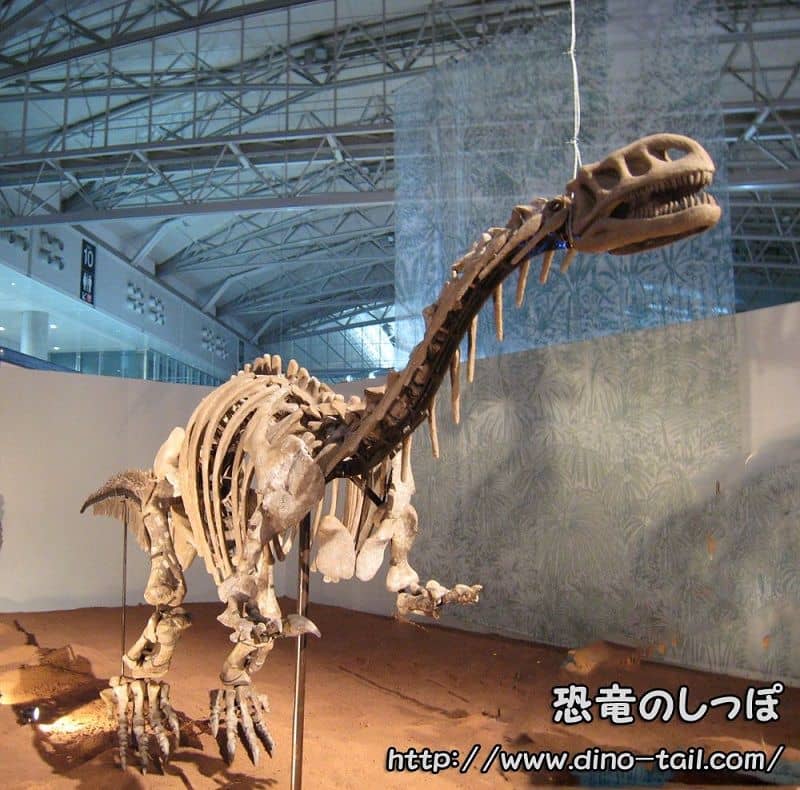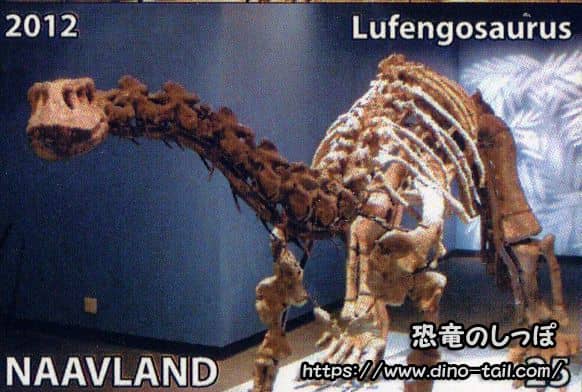About Lufengosaurus
| Scientific Name (Genus) | Lufengosaurus |
| Meaning of Name |
Lufeng lizard (after Lufeng, China)
Lufeng (place name) - saurus (lizard) [Greek] |
| Classification |
Saurischia, Sauropodomorpha (Prosauropoda)
Saurischia, Sauropodomorpha (Massopoda) |
| Total Length | Approx. 6m |
| Diet | Likely herbivorous |
| Period | Early Jurassic (approx. 190 million years ago) |
| Species | Lufengosaurus huenei |
| Year of Paper Publication | 1941 |
| Genus Name Publication |
A complete osteology of Lufengosaurus huenei Young (gen. et sp. nov.) from Lufeng, Yunnan, China.
Palaeontologia Sinica, New Series C 7. by C.C. (Chung Chien) Young. 1941. |
Features
Lufengosaurus is a sauropodomorph dinosaur frequently discovered in China.
About 20 fossils have been excavated to date.
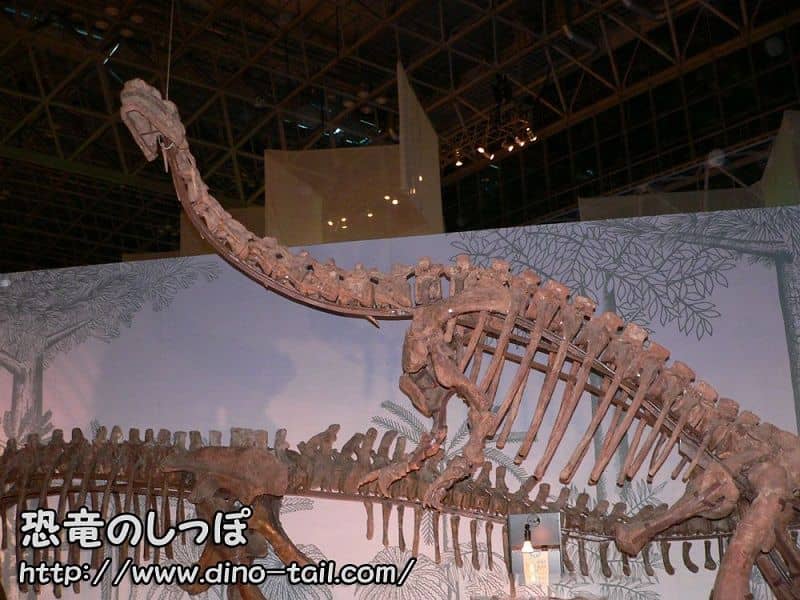
Lufengosaurus is estimated to have been 4.5 to 6 meters long and weighed 1700 kg. It was one of the larger prosauropods. It had a relatively long neck and could walk on four or two legs. It lived during the Early Jurassic period (about 190 million years ago).
Its diet (carnivorous, herbivorous, or omnivorous) is debated, but the discovery of gastroliths (stomach stones) near its abdomen makes it most likely herbivorous.
It is thought to have stood on two legs, balancing with its long tail, to eat leaves from high places.
The discovery of numerous skeletons in the same location suggests that they may have lived in groups.
It was once thought to be closely related to Plateosaurus, which is commonly found in Europe, but since 2012 it has been considered closer to Massospondylus, which lived in the Early Jurassic.
Additionally, Lufengosaurus had a large, curved, sharp claw on the thumb of its forelimb (hand) . It is believed this was used to pull plants closer to its mouth, dig for roots, and also as a defensive weapon against carnivorous dinosaurs.
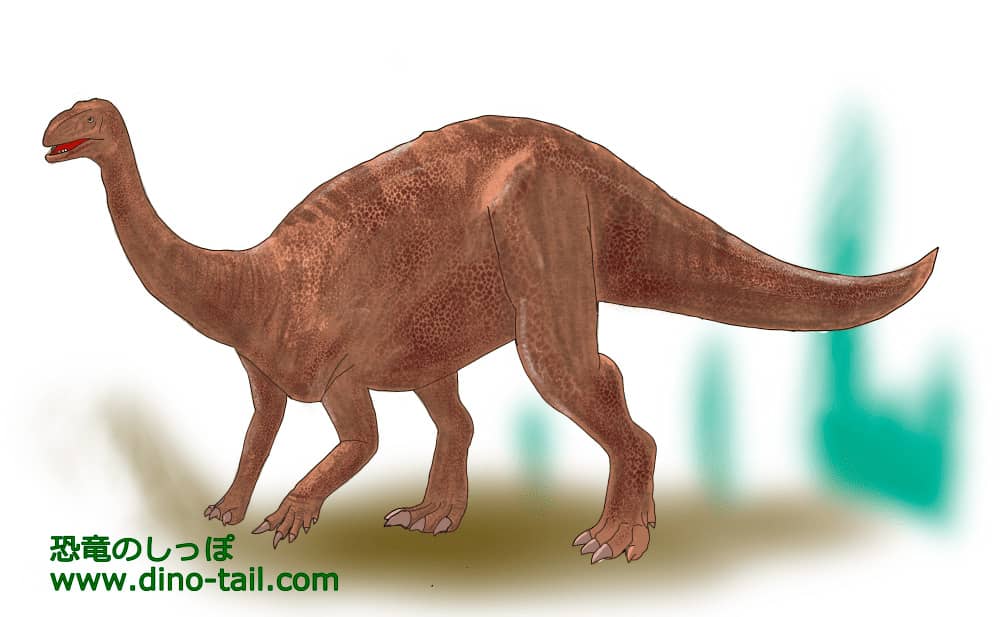
Unhatched Babies: A Prehistoric Time Capsule
In 2013, a major discovery was reported that shook the research history of Lufengosaurus and the entire field of paleontology. In Yunnan, China, numerous fossils of the world's oldest unhatched dinosaur embryos (babies) were discovered in what is believed to be a nesting site.
Active Movement in the Egg and Astonishing Growth Rate
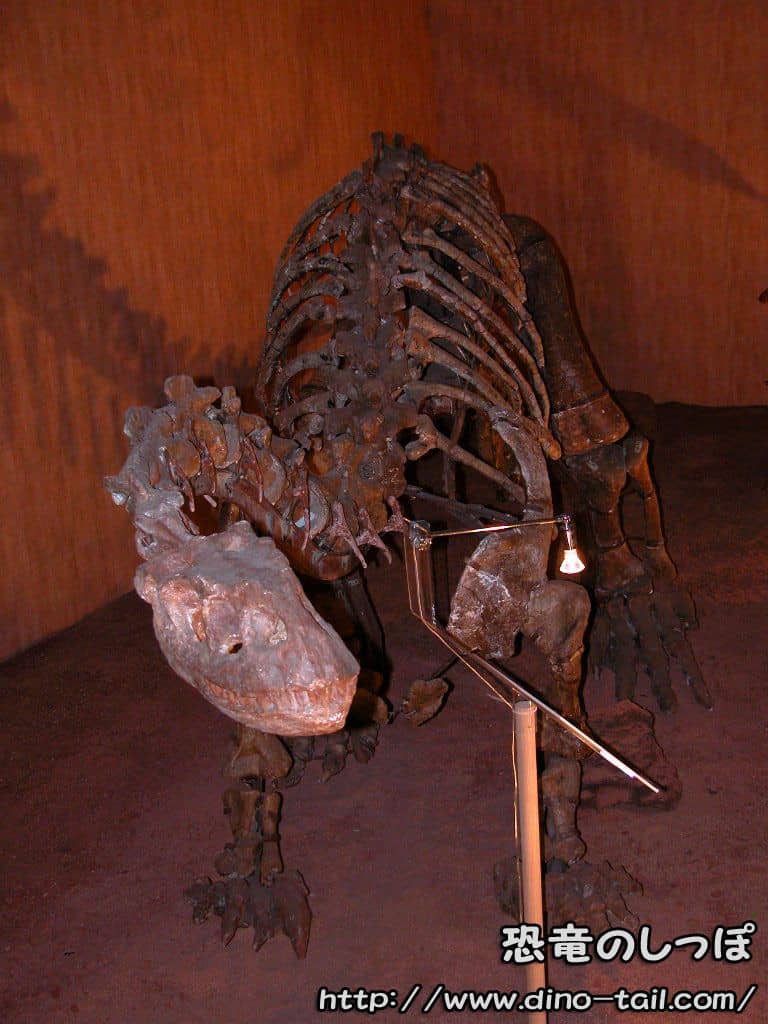
Detailed examination revealed that despite still being in the egg, the femurs showed traces of active muscle movement. This suggests that Lufengosaurus babies, like birds, moved their bodies inside the egg to strengthen their muscles in preparation for hatching. Furthermore, the bone tissue revealed that after hatching, they grew at an astonishing speed, comparable to or even faster than modern birds and mammals.
Discovery of 190-Million-Year-Old Organic Matter
The most surprising discovery was the finding of organic matter, believed to be protein (collagen) fragments, inside the embryo's femur. This discovery, which suggests that biological molecules could be preserved for a much longer time than previously thought—190 million years—amazed scientists worldwide as it opens up new possibilities for future dinosaur research.
Discovery and Description
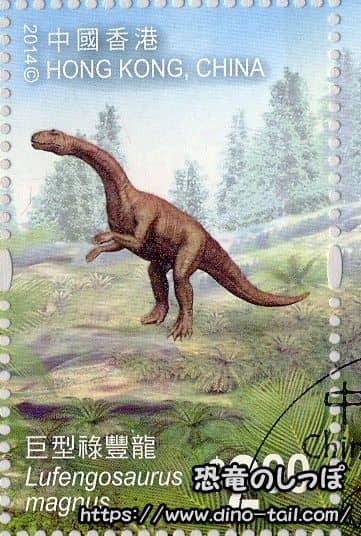
In the late 1930s, geologist Bien Meinian found fossils near Shawan in Lufeng, Yunnan Province, China. From 1938, paleontologist C.C. (Chung Chien) Young joined the excavation, and in 1941, he described the new genus and species Lufengosaurus huenei. The species name "huenei" was given in honor of Young's mentor, the German paleontologist Friedrich von Huene.
In 1958, a Lufengosaurus specimen became the first complete dinosaur skeleton to be mounted in China (a commemorative stamp was also issued that year).
Another species, Gyposaurus sinensis, described by Young in 1940, was reclassified as a juvenile Lufengosaurus by American paleontologist Peter Galton in 1976 (it has also been suggested that this species may be reclassified into yet another genus).
Lufengosaurus Stamp & Fossil Gallery
